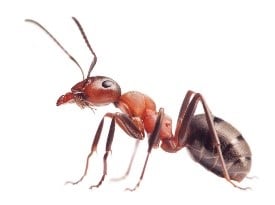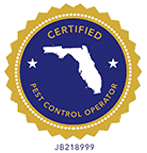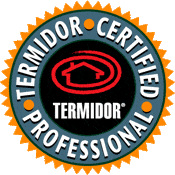Structure Infesting Ants
Identifying the ant species present in your home or office is critical to proper treatment and control. The single biggest mistake many homeowners or maintenance staff make is in trying to treat ants with DIY ant sprays. These are often repellant sprays which do not kill colonies. Most ant species are resistant to these common sprays from years of exposure.
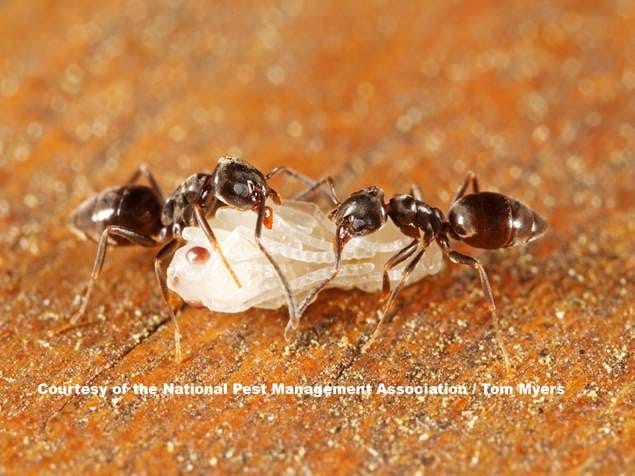
Odorous House Ants
Odorous House Ants, a/k/a sugar ants, are common pests in Florida. They are attracted to moisture. They are small, about 1/16″ to 1/8″ and are brown to black in color. Colonies can easily reach 100,000 or more.
OHA’s are fast and usually travel in lines and they give off a “rotten coconut” smell. They move their nest about every three weeks so locating their trail is critical to eradication. They will nest in wood piles, wall voids, logs, mulch, in other animal nests, window frames and insulation.
OHA’s are attracted to sweets such as fruit juices and pastries but they will eat most anything including pet foods. No amount of baits or sprays will control OHA’s without modification to occupant behavior and excluding entry into the structure. Inside, food sources must be removed and outside, tree branch trimming, standing water removal, leak repair or sealing of gaps/cracks is often required.
Pharaoh Ants
Pharaoh ants, are one of the most difficult ant species to control. These ants love warm, humid and inaccessible areas. Their colonies can be very large and they are resistant to most insecticides. This ant is a major spreader of bacteria. They like to travel along plumbing pipes and electrical wires in walls. Repellant chemical sprays should never be used as they will cause the colonies to fracture (bud) and spread throughout the structure.
Pharaoh ants are attracted to sweet, fatty or oily foods.
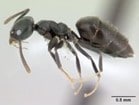
Whitefooted Ants
Whitefooted ants are mostly found outdoors but will move indoors in search of food, water and habitat. Outdoors, these ants feed on plant nectars and honeydew produced by aphids, mealybugs and scales. Whitefooted ants reproduce rapidly and form multiple nests.
Indoors, these ants are commonly found in kitchens and baths and they build nests in wall voids.
Repellant chemical sprays should never be used to control these ants.
Argentine Ants
Argentine ants are aggressive and will kill competing ants colonies. While they prefer to live outdoors, they typically invade structures when the weather cools or to seek higher ground during high rain events. They are major spreaders of bacteria. Their colonies can number in the millions. Because they reproduce so rapidly, eradication is rarely achieved with spot or one-time treatments.
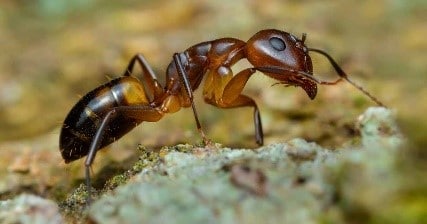
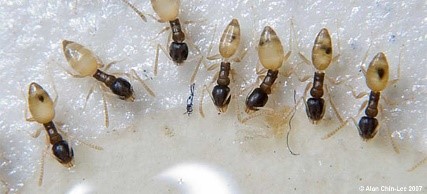
Ghost Ants
Ghost ants are small, pale and hard to see. They establish multiple nests and are commonly found in kitchens where they seek sweet foods. Indoors nests can be found in wall voids, behind baseboards/cabinets and in the soil in potted plants. They need high moisture, so they seek water sources around sinks, shower stalls, tubs, pet bowls and potted plants.
Pyramid Ants
Pyramid ants prefer to nest outdoors, and their nests have a volcano shape in the ground. They will forage indoors for sweet foods and water.
Control of these ants is best accomplished with nest treatment and regularly scheduled lawn treatment for insects.
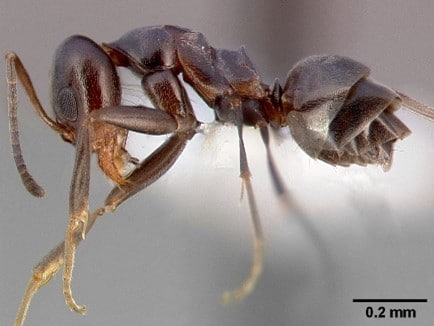
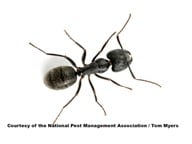
Carpenter Ants
Carpenter ants construct satellite nests in addition to the parent colony. Carpenter ants take advantage of existing damage in wood and often occupy wood previously damaged by termites. They may continue to excavate the wood to build nests or lay eggs, but will not consume it like a termite would.
While it is easy to exterminate a satellite nest of carpenter ants in a wall or patio column post, that does not exterminate the colony. The satellite nest may have originated from another satellite nest or the parent colony which may be located outdoors in a tree, wood pile, landscape timbers or in another area within the structure. Sometimes, it is impossible to locate all colonies or to know if the parent colony has been eliminated.
If you have an infestation of carpenter ants, you need professional help. An extensive infestation can cause structural damage over time.
Carpenter ants can bite if disturbed.
Rover Ants
Rover ants are a nuisance pest which is difficult to control. The good news is they do not establish super colonies. Rover ants like high moisture so it is critical to repair any leaking piping, to remove standing water sources and poor drainage.
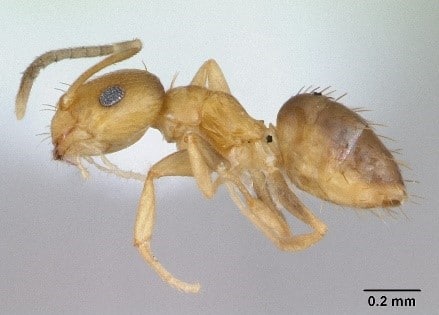
Fire Ants
Florida is home to the Florida Native Fire Ant and the Imported Fire Ant. Both fire ant species have stingers, and they are aggressive if disturbed. The sting of a fire ant is painful and leaves welts with white pustule. Many people are allergic to the venom from fire ants.
Fire ants build large nests often seen as mounds in yards, golf courses, parks and pastures, but they also nest in rotting logs, around trees and stumps, under pavement, indoors and inside electrical equipment and utility housings.
They feed on carbohydrates, proteins and lipids. They can forage more than 100 feet from their nest and there can be multiple nests. Controlling fire ants is difficult once established. Reinfestation of treated areas is common. Controlling fire ants is often an on-going program involving broadcast treatment of the entire area plus mound treatment.
Crazy Ants
Crazy ants get their name from their habit of running in an erratic, jerky manner. They are considered nuisance pests and pose little health threat.
Crazy ants typically invade our homes during cooler weather when they are foraging for food and water.
Crazy ants can bite if disturbed.
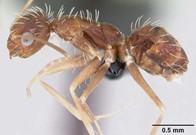
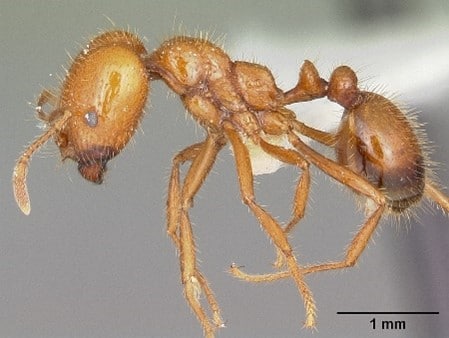
Thief Ants
Thief ants are one of the smallest household ants. Thief ants are often confused with Pharaoh ants and are also referred to as "grease ants" or "sugar ants".
Thief ants are trailing ants. They are major spreaders of bacteria.
Acrobat Ants
Acrobat ants are a nuisance pest but if the colony is disturbed, they may sting. These trailing ants often enter structures along wires, utility lines and pipes running from outside to inside the structure.
These ants are attracted to moisture and are often found in water damaged wood, around leaking windows and in kitchens and baths.
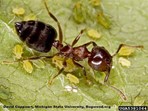
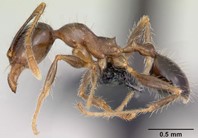
Bigheaded Ants
Bigheaded ants leave visible evidence of infestation by displacing soil in lawns, between pavers or along foundations. Like termites, they leave foraging tubes up the sides of foundations and walls. They may also be found in trees where they will travel along branches to gain access to attics.
Controlling Bigheaded ants is difficult because they establish multiple nests and populations typically extend across property lines. Repellant chemical sprays should never be used as it will cause the colonies to bud.
Bigheaded ants may displace other ant species such as the red imported fire ant and the white footed ant. Bigheaded ants can sting if disturbed.


